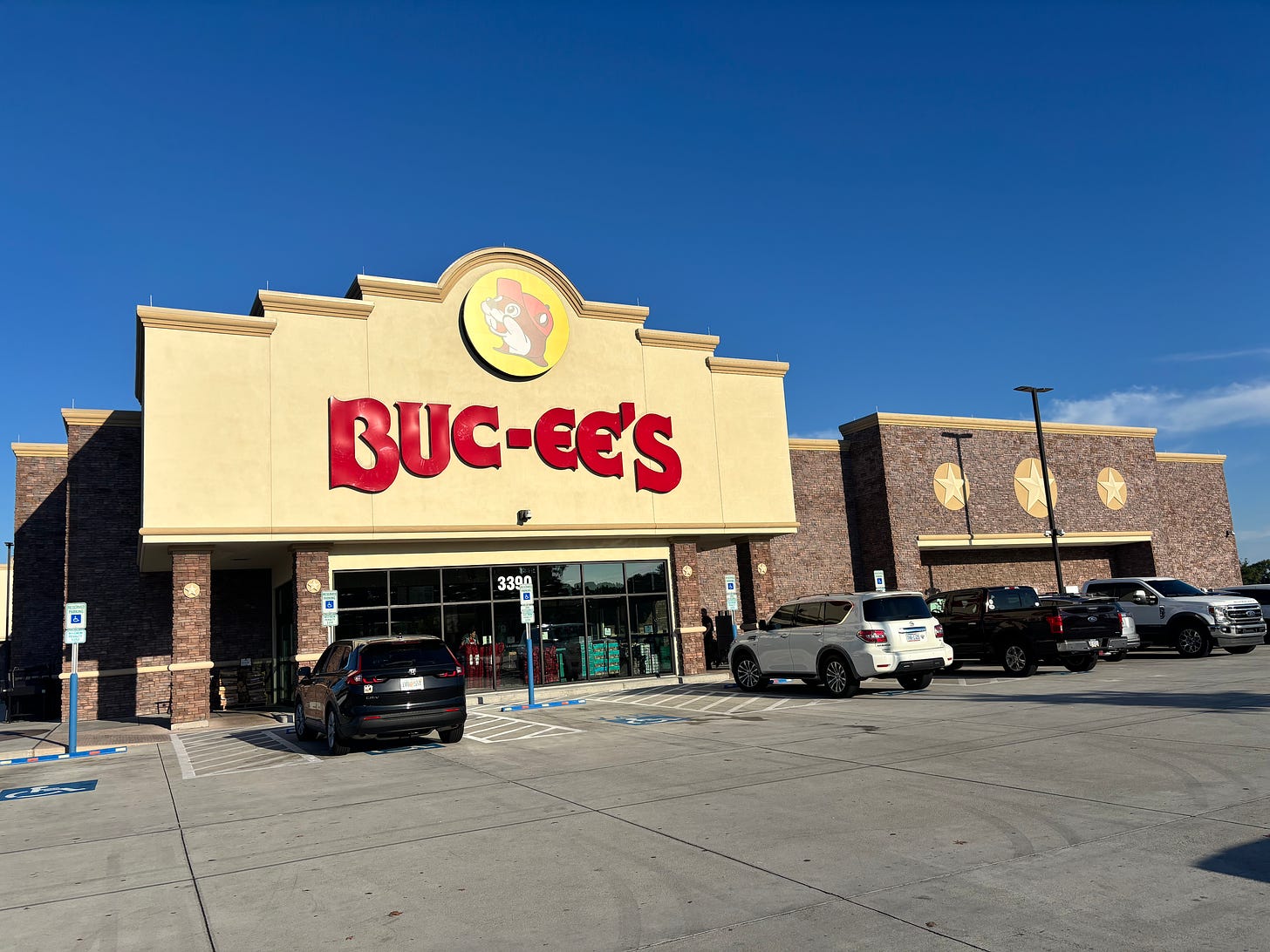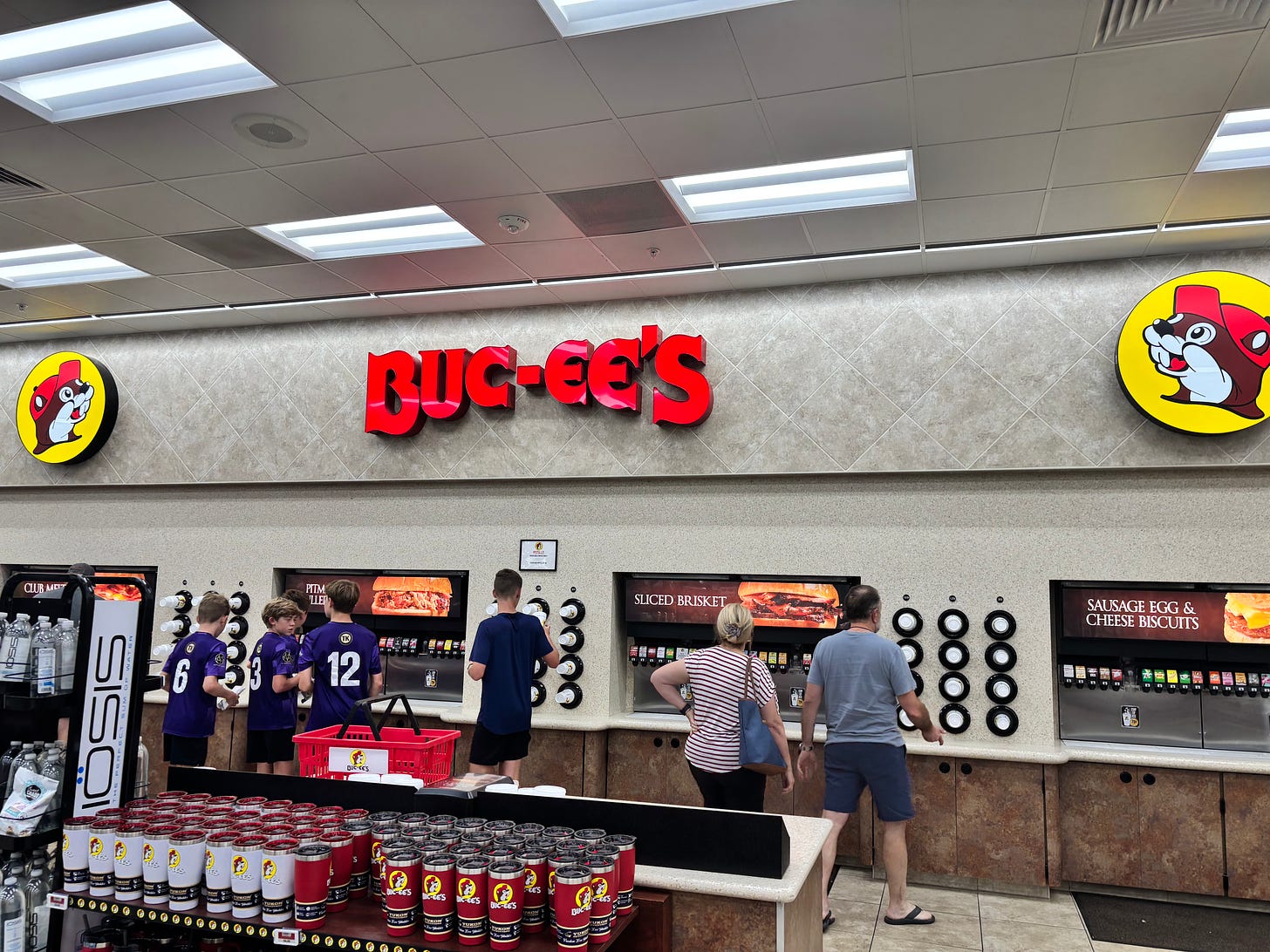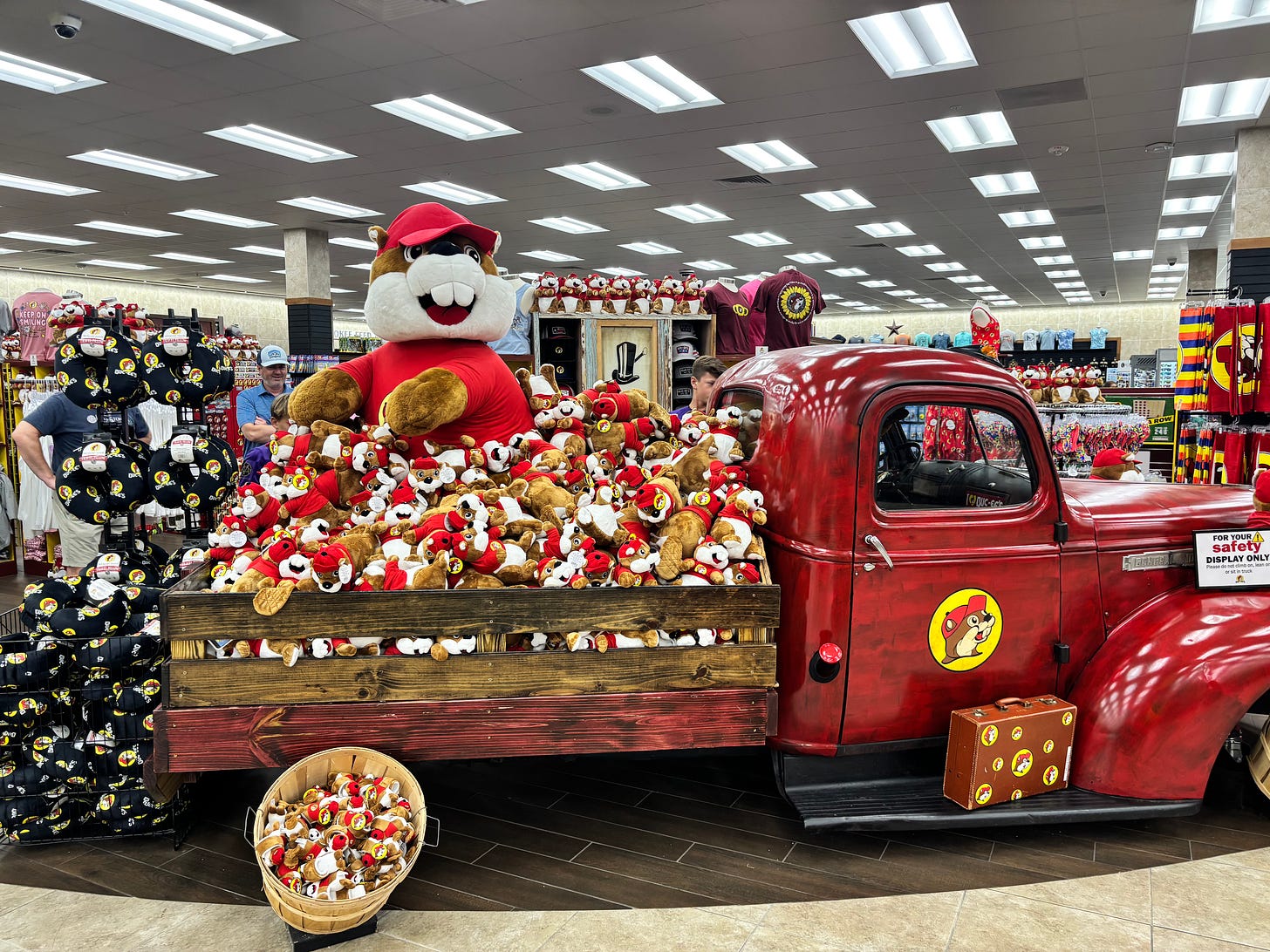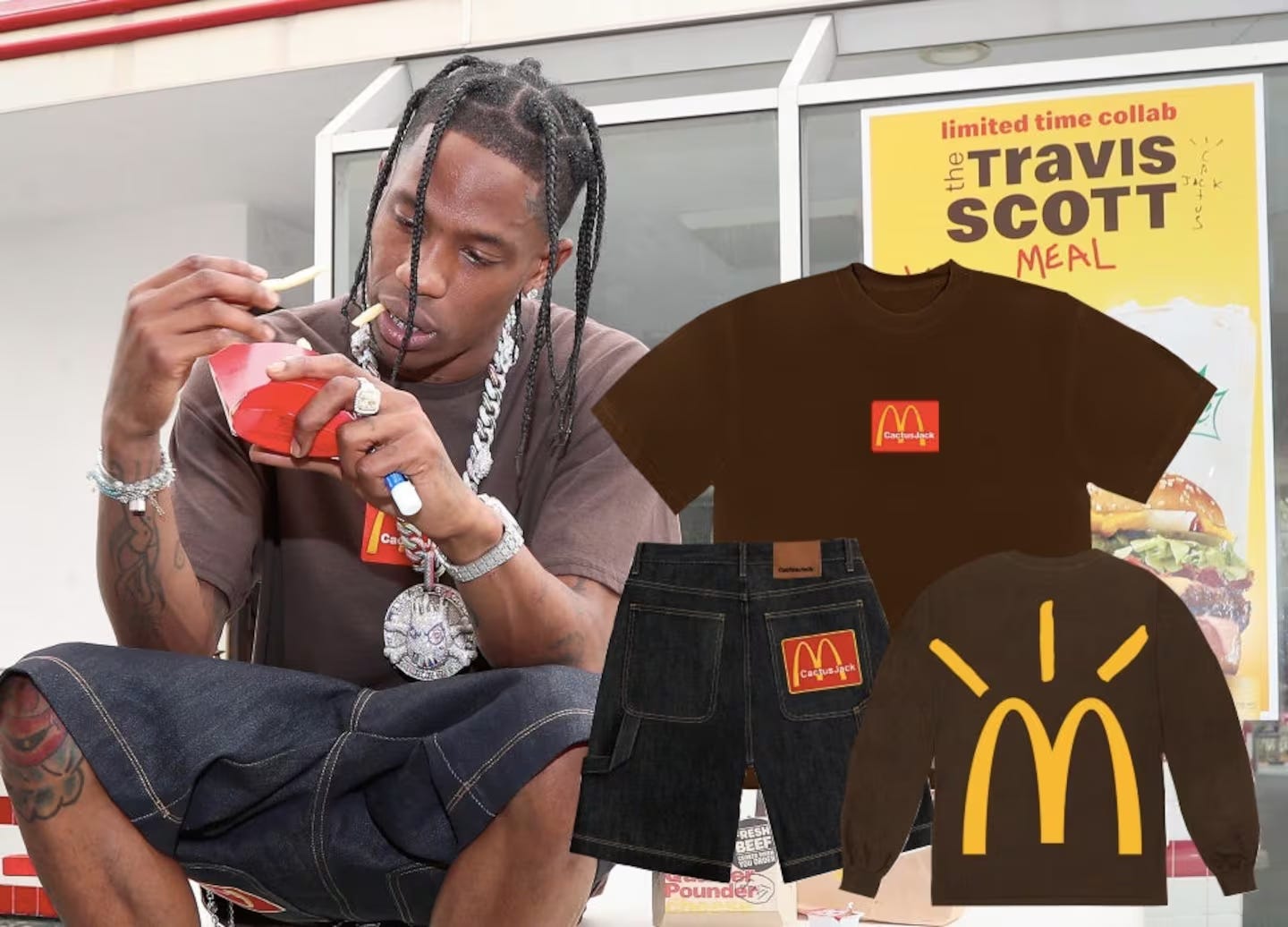Brands win by treating customers as fans – just look at Buc-ee’s and McDonald’s.
Brands win by treating customers as fans – just look at Buc-ee’s and McDonald’s.
Have you ever experienced a Buc-ee’s? If you haven’t, you’re missing out.
Buc-ee’s is a chain of rest stops that was founded in 1982 in Clute, Texas and has grown to over 50 locations across the southern United States.
Fun fact: Buc-ee’s has the largest gas station in the world, located in Luling, Texas.
When I asked if you’ve ever experienced a Buc-ee’s, I meant that literally. You don’t just go to a Buc-ee’s or stop at Buc-ee’s. You experience it. They’re known for their adorable beaver mascot, but also their cleanliness, hospitality, and the dozens of offerings at each location.

I don’t want you to confuse Buc-ee’s as a truck stop because they don’t allow trucks. They’ve never permitted 18-wheelers, saying that “the company’s parking lots and driveways aren’t designed to accommodate truckers.” As you can imagine, truckers aren’t happy about it.
But for the rest of us, it’s pretty awesome. At each stop, you can order freshly made barbecue, fudge, jerky, and, of course, coffee.

You can also find their mascot emblazoned on every kind of merchandise, from shirts to dog toys to towels and so much more.
Whenever I walk my dog, Nathan, wearing my Buc-ee’s swag, you should see the way people react. There’s a connection between that beaver and people.
They’re not customers of Buc-ee’s. They’re fans.

If you’re building a brand or creating a product, your goal should be to inspire a fan base, not just a customer base.
Once upon a time, McDonald’s was painted as the villain of the American diet. For years, it faced an uphill battle against public disdain.
Dr. Marcus Collins, an award-winning marketer and professor, loves to tell McDonald’s comeback story. In the early 2000s, McDonald’s garnered the title of “most hated company in the country.” It was the go-to scapegoat for everything wrong with unhealthy eating habits. Yet, despite the backlash, something remarkable was happening: 68 million people still walked through McDonald’s doors every day, showing their appreciation for the Golden Arches.
How could a brand that seemingly attracted so much negativity also maintain such a dedicated fan base?
This paradox revealed a crucial opportunity, one that McDonald’s had overlooked for too long. Instead of laboring under a heavy burden of hate, the brand could choose to embrace the love and loyalty of its fans.
Marcus noted that acknowledging this fan base required a significant cultural shift within the organization. Rather than seeing people as mere consumers — data points fit for algorithms or walking credit cards — they needed to recognize them as passionate fans who found joy in their meals. This change of perspective is where the true transformation began.

The mind-boggling journey didn’t end with the acknowledgment of fans; it pivoted towards engagement.
Collins shared how McDonald’s undertook an ethnographic study to understand these individuals better. They didn’t just want to know who their customers were; they aimed to grasp the emotional and social threads that connected them to the brand. This journey into self-awareness revealed what he termed the “fan truth.” It was this newfound understanding that laid the groundwork for an authentic connection.
This shift in engagement was about more than just rebranding; it required a more open-minded approach to how McDonald’s viewed its identity. The executives had to relinquish their iron grip on their intellectual property. For a brand that had historically operated in fear of losing its image, this was a daring leap into the unknown. After years of safeguarding their brand against potential backlash, McDonald’s learned to let go and allow fans to play, create, and redefine what the brand represented to them. By fostering a culture of collaboration, McDonald’s transformed its narrative from one of fear to one of creative courage.
McDonald’s remarkable transformation serves as a powerful lesson in the importance of treating people as fans, not mere numbers. It’s about understanding the unique stories, shared experiences, and emotional connections that people have & Nacho Lesson. By embracing self-awareness and promoting personal development among staff, brands can cultivate not just consumers but passionate advocates who support and elevate the brand experience, both online and offline.
So, the next time you’re contemplating how to connect with your audience — a word that makes me cringe — consider the way Buc-ee’s and McDonald’s work. It’s not just about transactions; it’s about relationships. Focus on your fans, ignite your internal culture, and watch as your brand flourishes in ways you never imagined.